Andrew Rule: New twist in Great Bookie Robbery 44 years on
Masked bandits trained like a commando unit and making off with millions. The Great Bookie Robbery has gone down in folklore, but there has always been a hole in the story. Now new details could shed light on how a brazen gang pulled off Melbourne’s crime of the century.
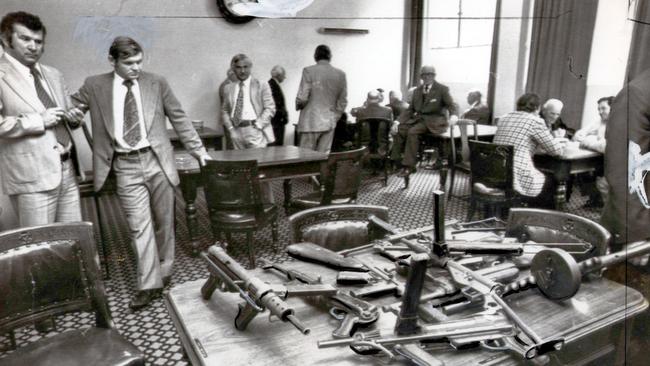
It is 44 years since the Great Bookie Robbery, a heist that has gone down in folklore for its flawless execution, the huge size of the prize, and the “curse” that led most of those involved to die violently.
But there has always been a hole in the story: the likelihood the robbers had “silent partners” who got away with colluding in the crime of the century.
A couple of tough questions still hang over the robbery, which unfolded with well-rehearsed precision when armed and masked men raided the bookmakers’ settling room at the Victorian Club in Queen St on April 21, 1976, the Wednesday after Easter.
The crooks were confident, the caper bold and brazen. The legend is that their leader Ray Chuck, a.k.a Raymond Patrick Bennett, had trained them like a commando unit, a tactic borrowed from the “Wembley gang” he’d seen in England with his mate Brian O’Callaghan.
Crooks are gamblers at heart.
They know the best bet is on the fixed race, the marked cards, the loaded dice. If the robbers could tilt the odds in their favour, they would.
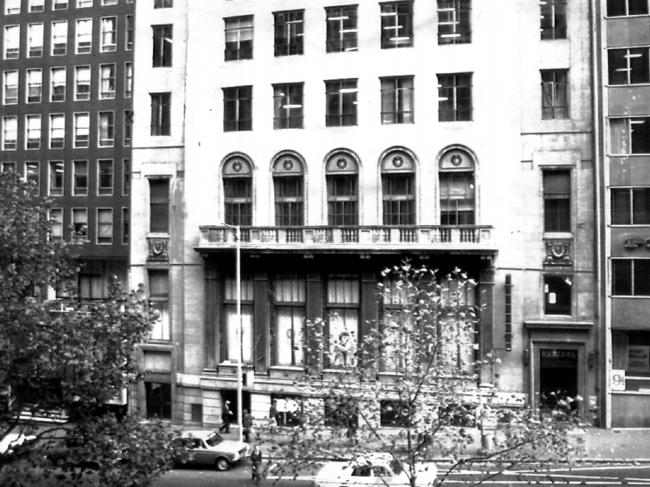
This bit has been overlooked for decades but is no less likely for that. First, the bookies were almost certainly betrayed by an insider, if not a fellow bookmaker then someone who knew the club well. Second, and more sinister, is the whiff that lingers over a senior policeman who worked both sides of the law.
The potential for corruption was massive because the money was massive. The official figure of $1.4 million was the insured amount — considerably less than what the robbers actually got. But how much less? That question has fed myths for decades.
The figure has grown from a plausible $2 to $3 million to the preposterous claim it “could be” $15 million. Such wild speculation sprouts from a plain fact: bookies routinely stashed more cash in their strongboxes than they declared.
The biggest punters of the day, and there were plenty, bet “on the nod”, meaning their bets were not recorded in bookmakers’ ledgers. Big punters, if they won heavily, thought it was safer to leave winnings with the bookies, whose strongboxes would go by armoured car to the Victorian Club in Queen St for settling on the first business day after the races.
The robbers’ take was well higher than the insurance, but whether the real total was $2 million or $5 million is hard to say.
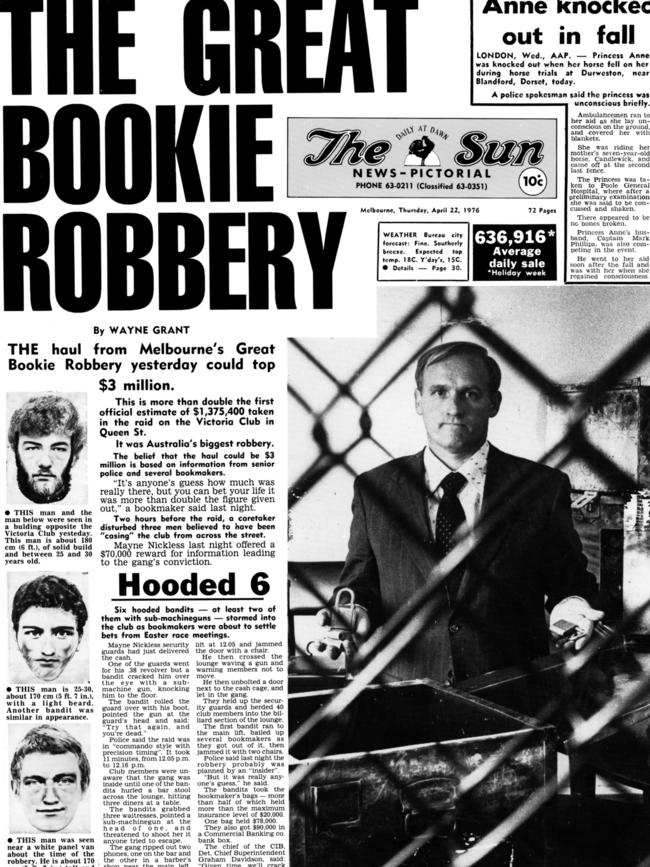
One bookmaker’s clerk, who hit the carpet face down when the bandits hit the settling room, estimates the take would be no more than double the official figure, meaning under $3 million. Others have different ideas.
One bookmaker’s son says his father was insured for $10,000 but lost $38,000 in the raid, so he guesses the real total was three to five times insurance value. And an underworld veteran on nickname terms with the robbers (“Nose”, “Fingers”, “Greedy”, “Chops” and “Veggie”) believes they got close to a million each, enough that they paid $300,000 to “Greedy” Smith’s mate, Kerry Ashford, to use his house to count the loot.
If the underworld grapevine is right, the haul was up to $6 million. Even half that was a fantastic sum at a time when a suburban house cost $25,000 … and when a police sergeant earned $120 a week.
All of which means the gang could well afford to bribe two key people.
One was “an inside man”, someone who knew the club’s layout well enough to identify a long-forgotten door linking the settling room with an unused lift lobby in the building next door, an access point once used by builders.
The late painter and docker Billy “the Texan” Longley once told me that an insider had earlier floated the idea of robbing the bookies on settling day. Longley passed up the offer but reckoned the same insider took the idea to Ray Chuck.
Then there is the enigmatic senior policeman whispered to have given the robbers a walk-up start.

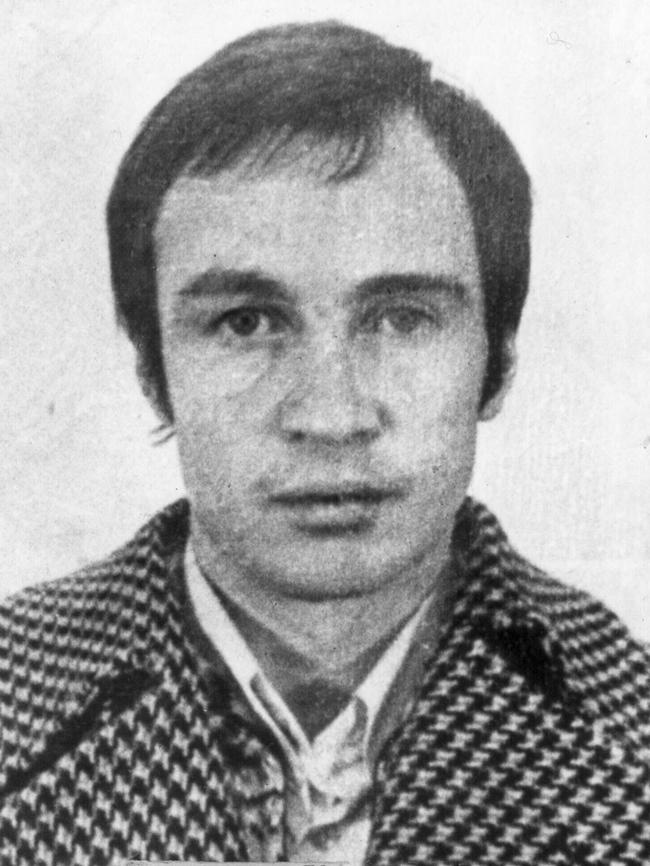
His name was Eric Janetzki, and if he was in on “the joke”, it wouldn’t be the first time. Janetzki was surely a snake in the grass for most of his long and oddly successful career.
In the weeks after the robbery, detectives in the crime department at Russell St headquarters wondered about an odd thing that had happened on that Wednesday after Easter.
On settling days, a group of crime squad detectives always turned up at the Victorian Club to act as de facto armed guards. It was one of the “perks” that detectives did in those days in return for cash or meals or drinks or tickets, the sort of borderline stuff tolerated by their superiors. Especially superiors who copped a kickback.
This homegrown arrangement of babysitting the bookies’ cash had worked well for a long time, but there was an in-built flaw: because it was informal, in theory the detectives could be sent elsewhere for proper police work. In practice, that didn’t happen. Until it did … on April 21, 1976, the biggest settling day outside Melbourne Cup week.
Detail is scarce because those who know are dead or don’t talk. The smart money says that just before the detectives were due to go to Queen St, they were diverted to “a job”. There was talk of needing police at a suburban courthouse for some reason. Whose orders? As the effective boss of the crime department, Janetzki had final say.
It was a wild-goose chase. By the time the detectives realised that, it was too late. Back in town, the masked men had vanished along with the contents of 118 canvas money bags taken from the dozens of cashboxes cut open with bolt cutters. The whole thing took minutes.
It was the perfect crime, although that didn’t help those who did the heavy work. Ray Chuck was shot dead in the old City Court in 1979.

“Fingers” Carroll, former boxer, was shot dead by Russell “Mad Dog” Cox in 1983, probably in a dispute over stolen money buried under a shed behind a rented safe house in Mt Martha. Normie “Chops” Lee was shot by police in a foiled robbery at Melbourne Airport a few years later.
As police and predators swarmed after the survivors, they found that money didn’t buy peace.
As for Janetzki, if he got a cut from the robbery, he knew how to hide it. He was an old-school copper with what one colourful ex-detective calls “an entrepreneurial streak”.
Streetwise police knew it was worth going to a particular second- hand car yard in McIntyre Rd, Sunshine, to buy a car because Janetzki owned it. Or was in a silent partnership with someone else.

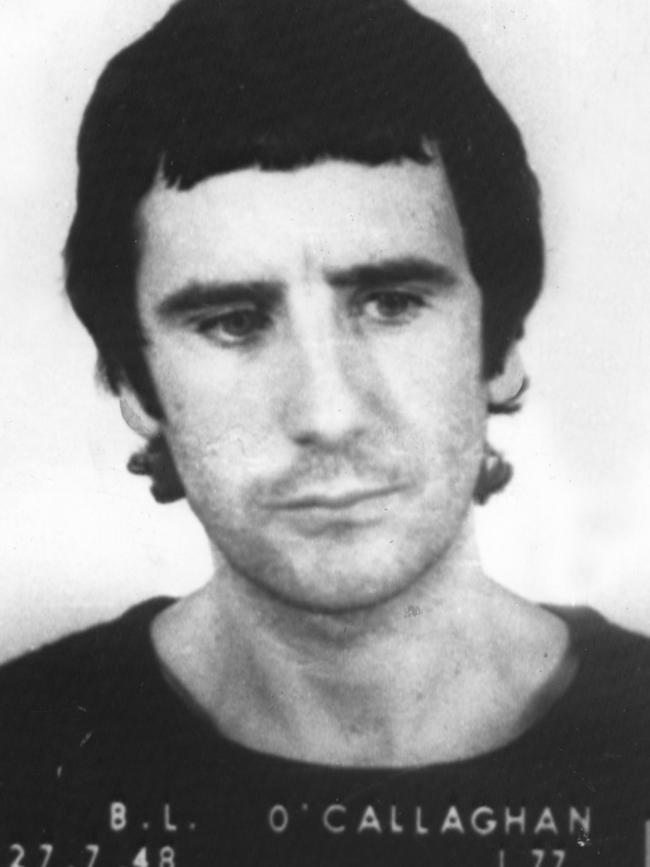
A car yard was an interesting side hustle for a senior policeman whose duties included overseeing the Stolen Car Squad. But it wasn’t the only angle for a man who dressed plainly and lived in unassuming addresses, first in South Geelong, later in Sunshine.
From the time he was a boy at Winiam East, near Nhill, the wheat cocky’s son was shrewd and tough, a “self improver” with the farmboy knack for making money on the side. He was born in 1919, served in World War II as a military policeman without much risk of harm, switched to the Victoria Police after the war. By then he was married to his Nhill fiance, Ella Sutcliffe, whose 1940s wedding dress is now on display with the Brighton Historical Society.
For nearly 20 years, Janetzki was top dog in Geelong CIB. This was handy, as his son-in-law Dr Mario Marchesani was Geelong’s top illegal abortionist.
Janetzki’s daughter Rayleen left the dirty doc by the time he and her father were named in the Abortion Inquiry in 1970.
It was a good move: Marchesani was later jailed for 30 months for swapping drugs for sex with prostitutes.
As for “Dad”, Janetzki shrugged off both the bad publicity and Geelong — by 1972 he was in charge of the crime-rich precincts of Richmond. He was investigated again, this time by Barry Beach QC, in the inquiry on police corruption in 1976. Beach didn’t lay a glove on Janetzki, but that didn’t prove much. None of the police that Beach had charged were convicted.
In 1979, magistrate Phillip Westmore refused Janetzki’s application to carry a pistol after his looming retirement. Janetzki’s intriguing reason for this was that he was “in fear of a former colleague and a dangerous criminal” who had conspired to break into his house.
Janetzki didn’t get his legal pistol, although he surely kept one or two taken from the likes of “Jockey” Smith in the good old days. But in September 1982, Janetzki got his National Medal for 33 years of police work. Next in line for the medal was respected Senior Sgt Allan “Yabby” Jeans, premiership football coach.
Jeans was lauded when he died. Janetzki not so much, even in his own family. His engraved medals ended up on an online auction site, where anyone could buy them for $280.
MORE ANDREW RULE
COPS THWARTED TOURIST’S MURDEROUS RAMPAGE
INSIDE THE SEARCH FOR SENSE IN POLICE TRAGEDY

